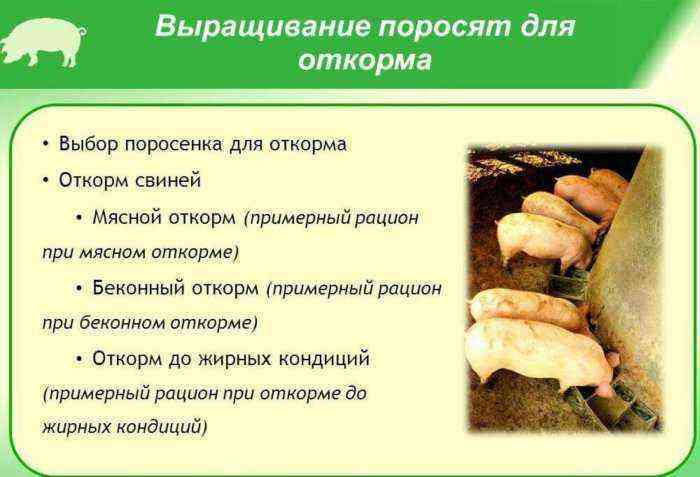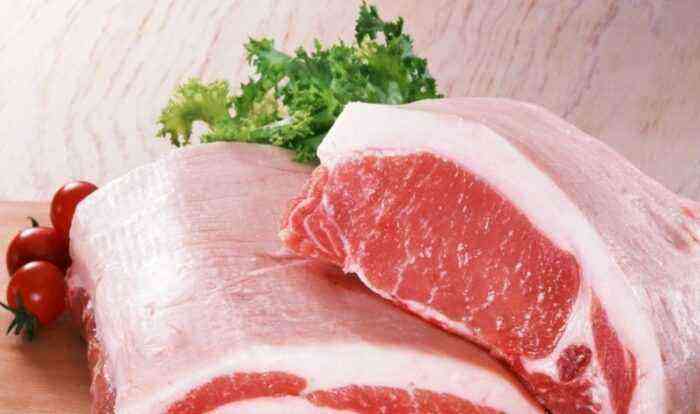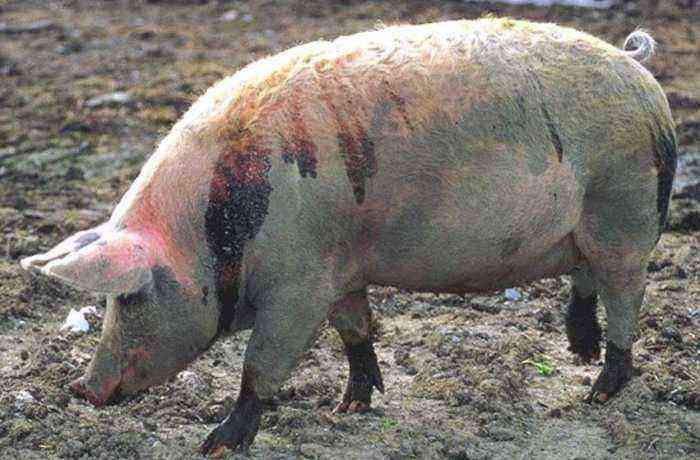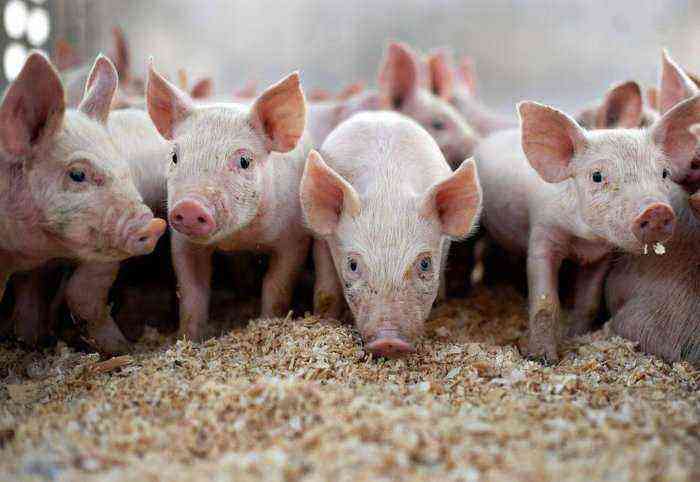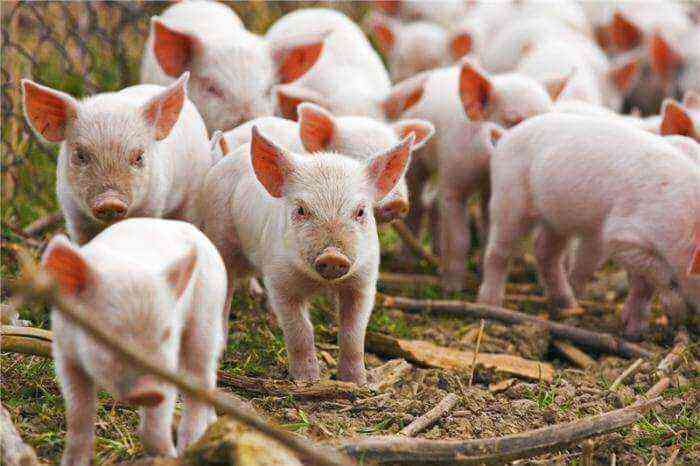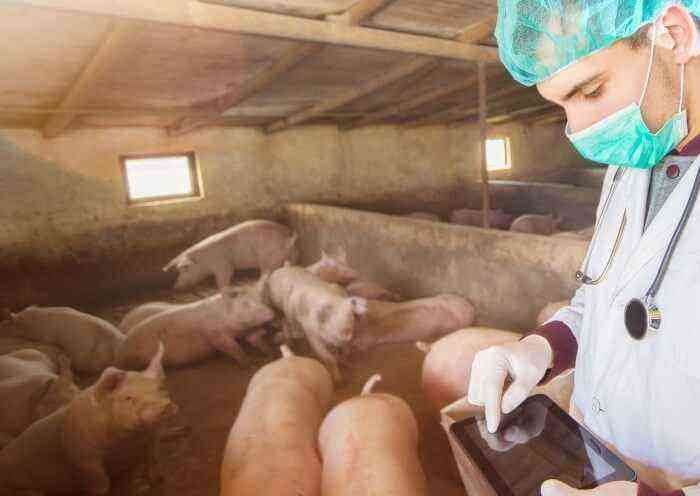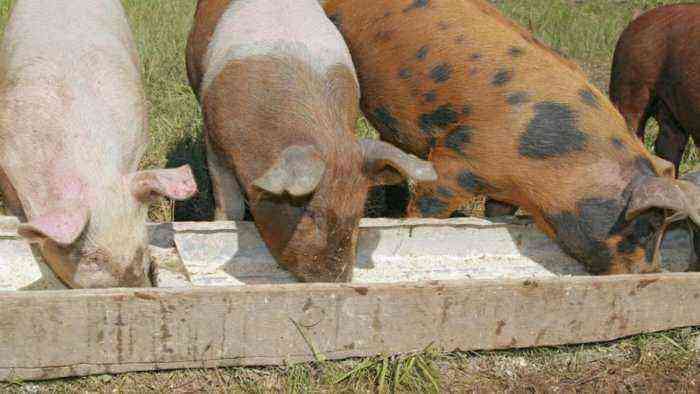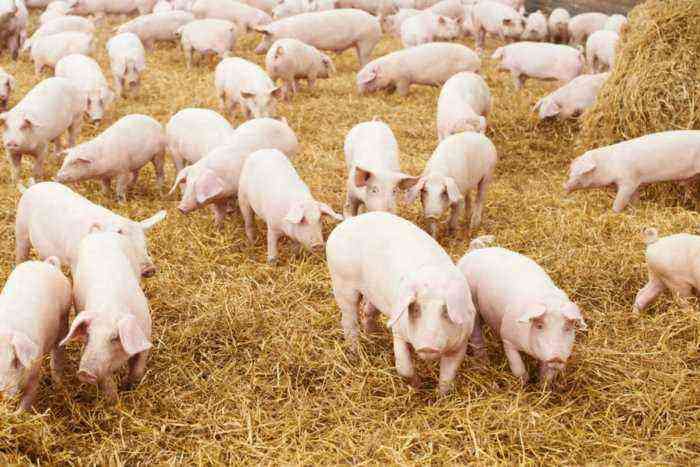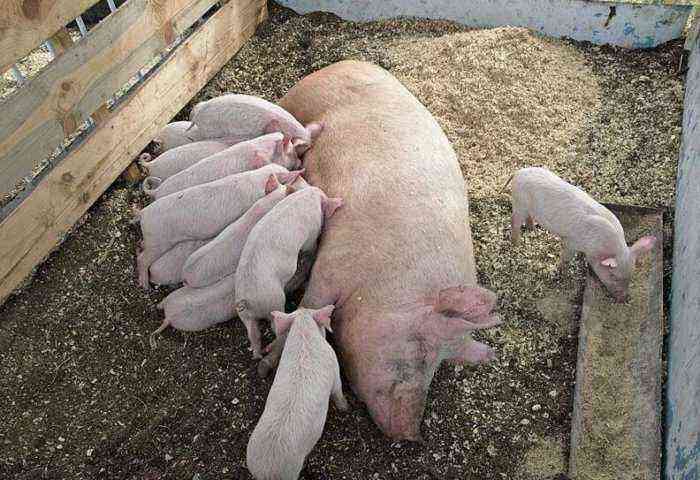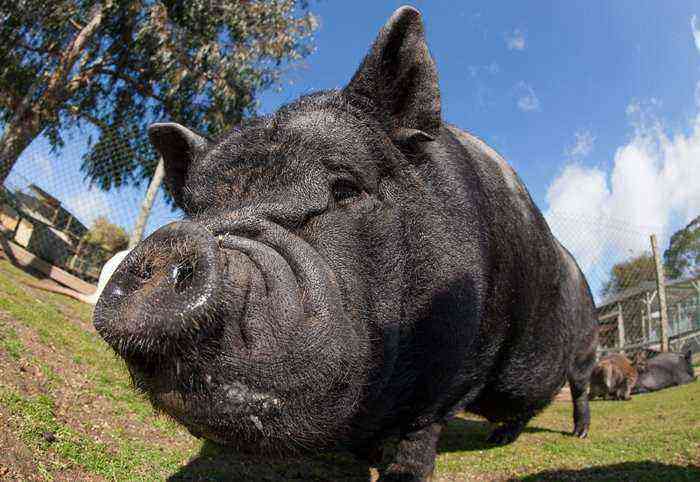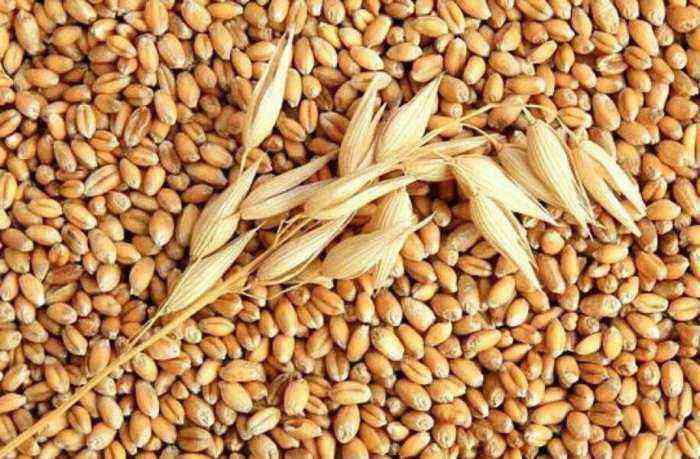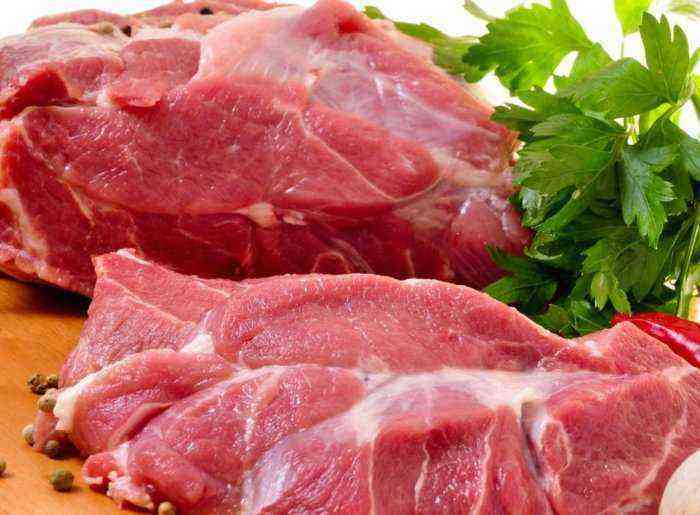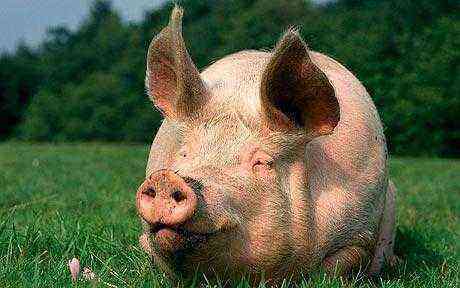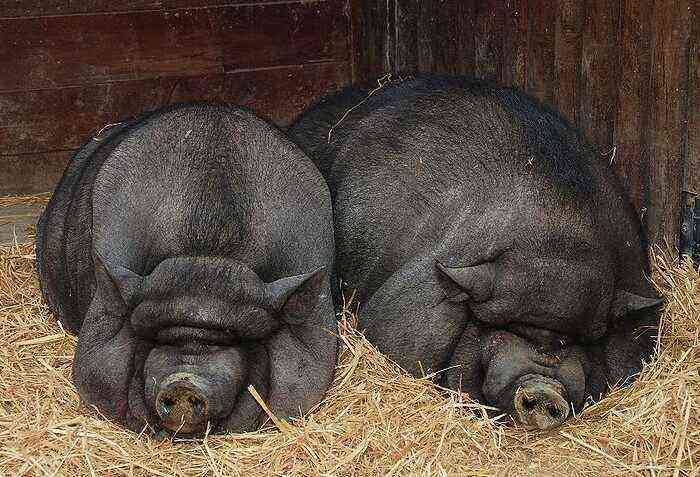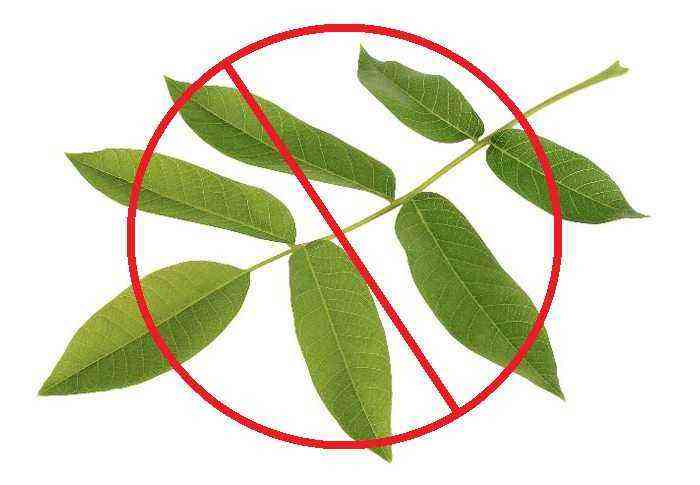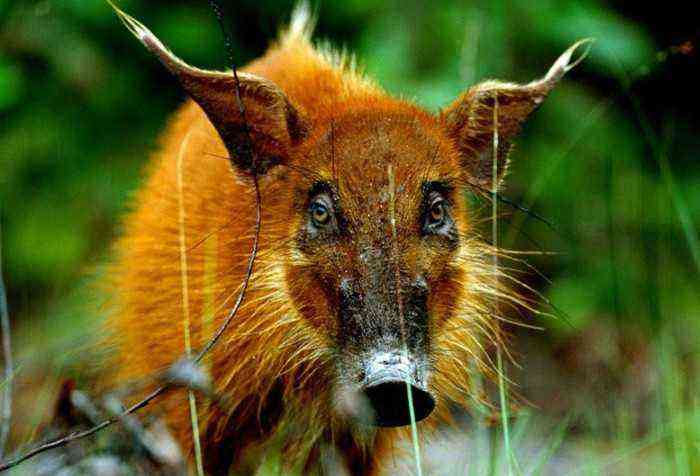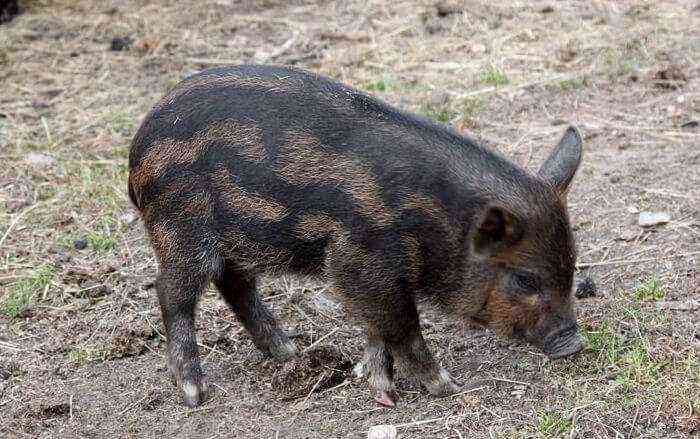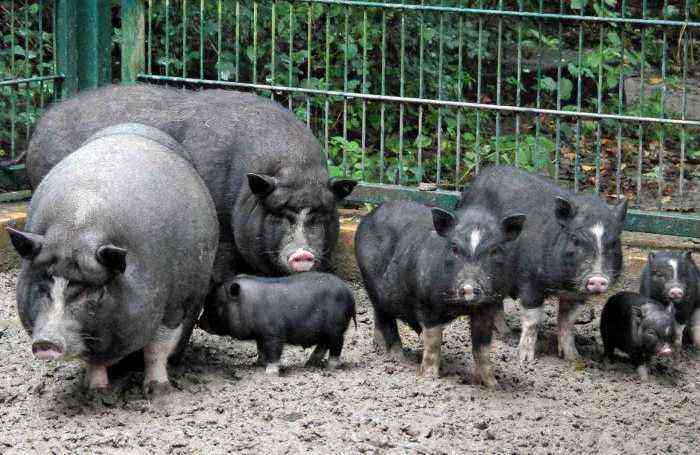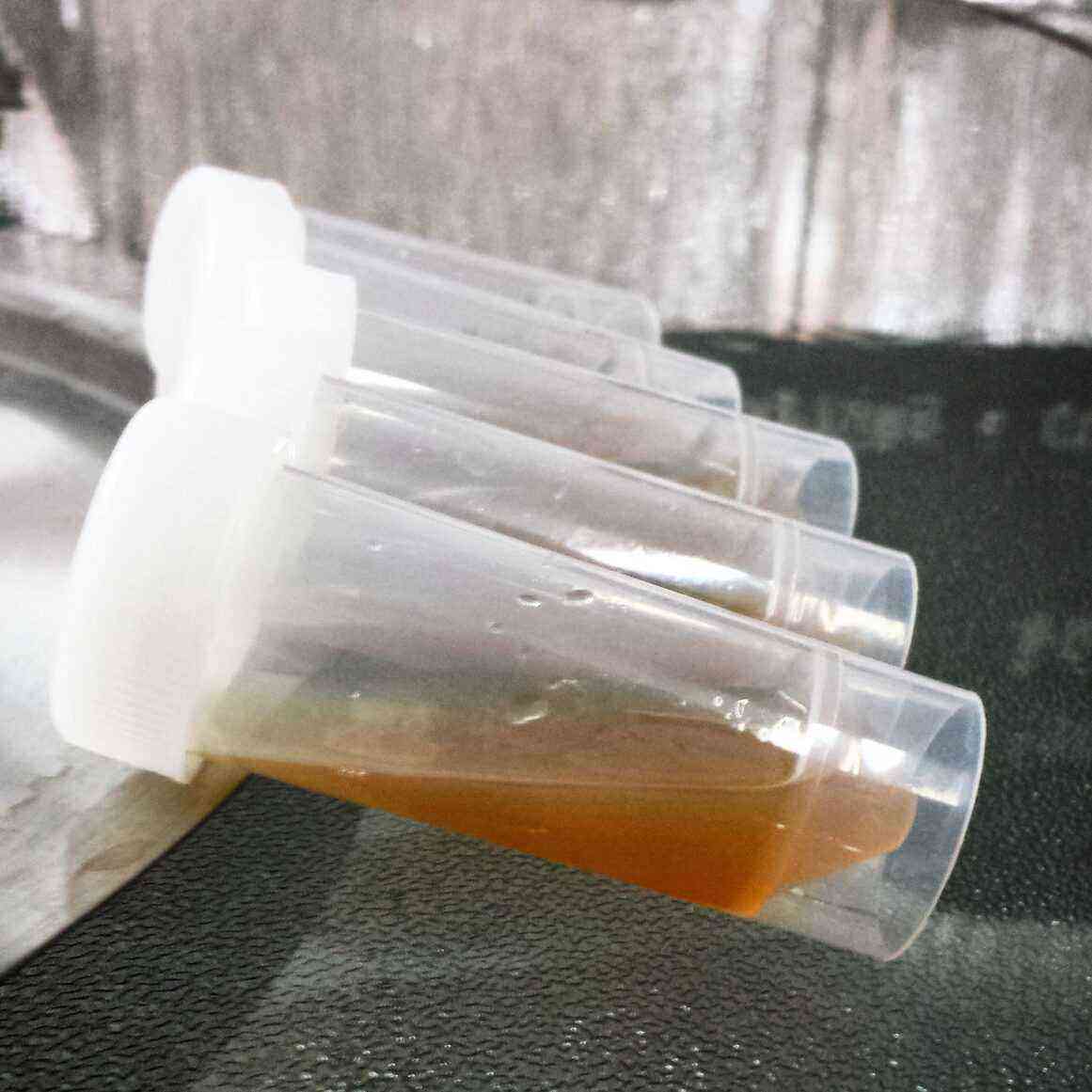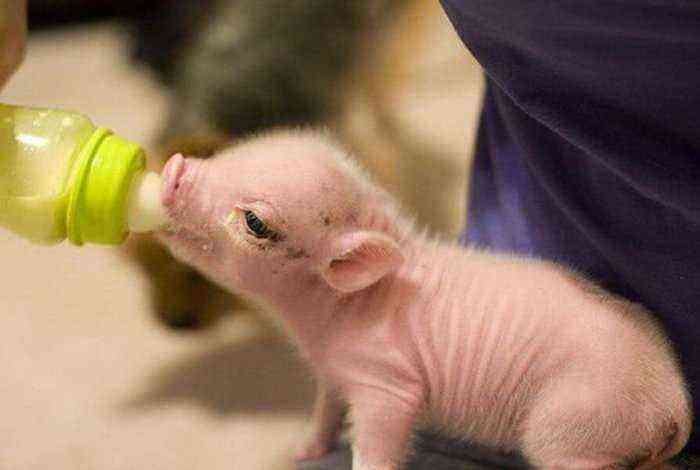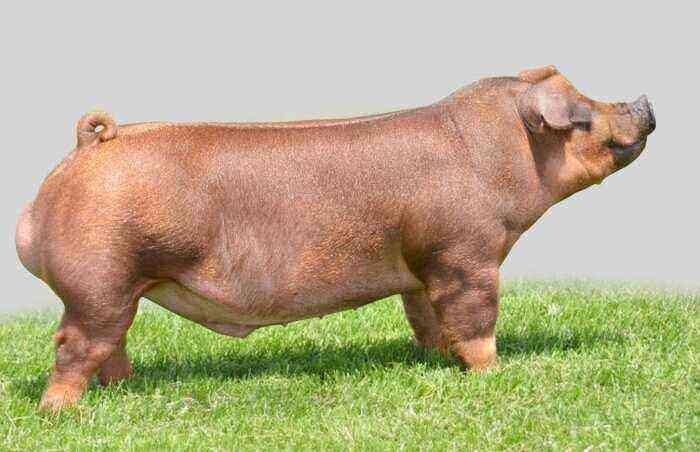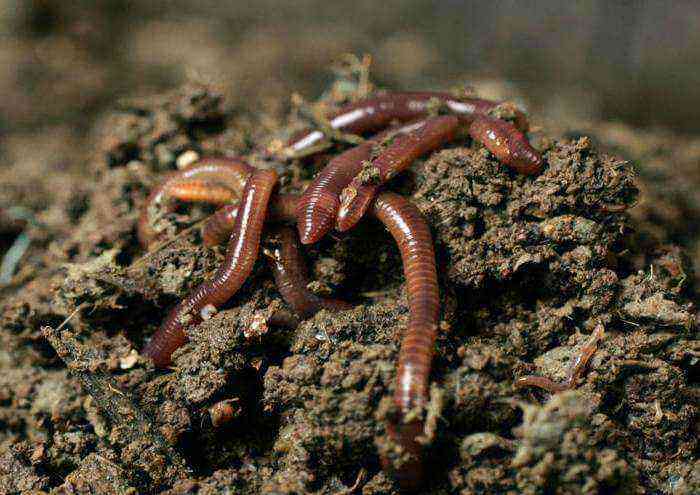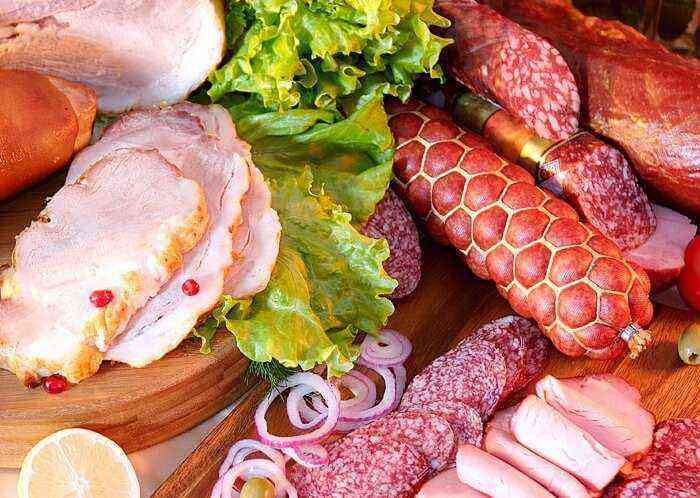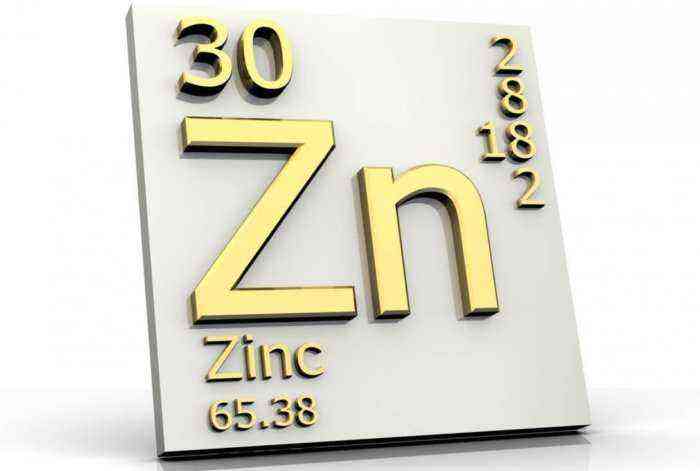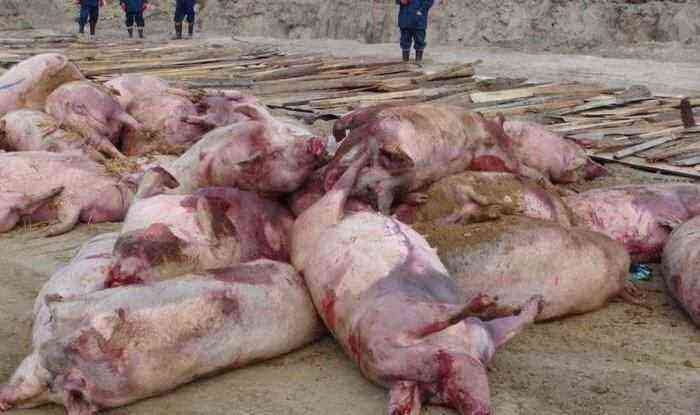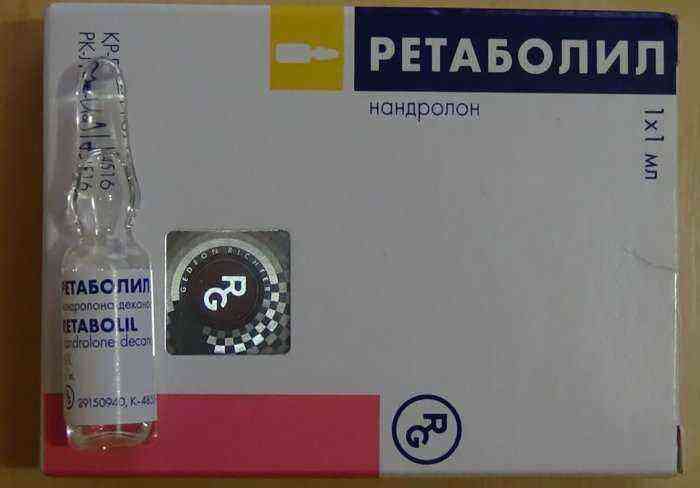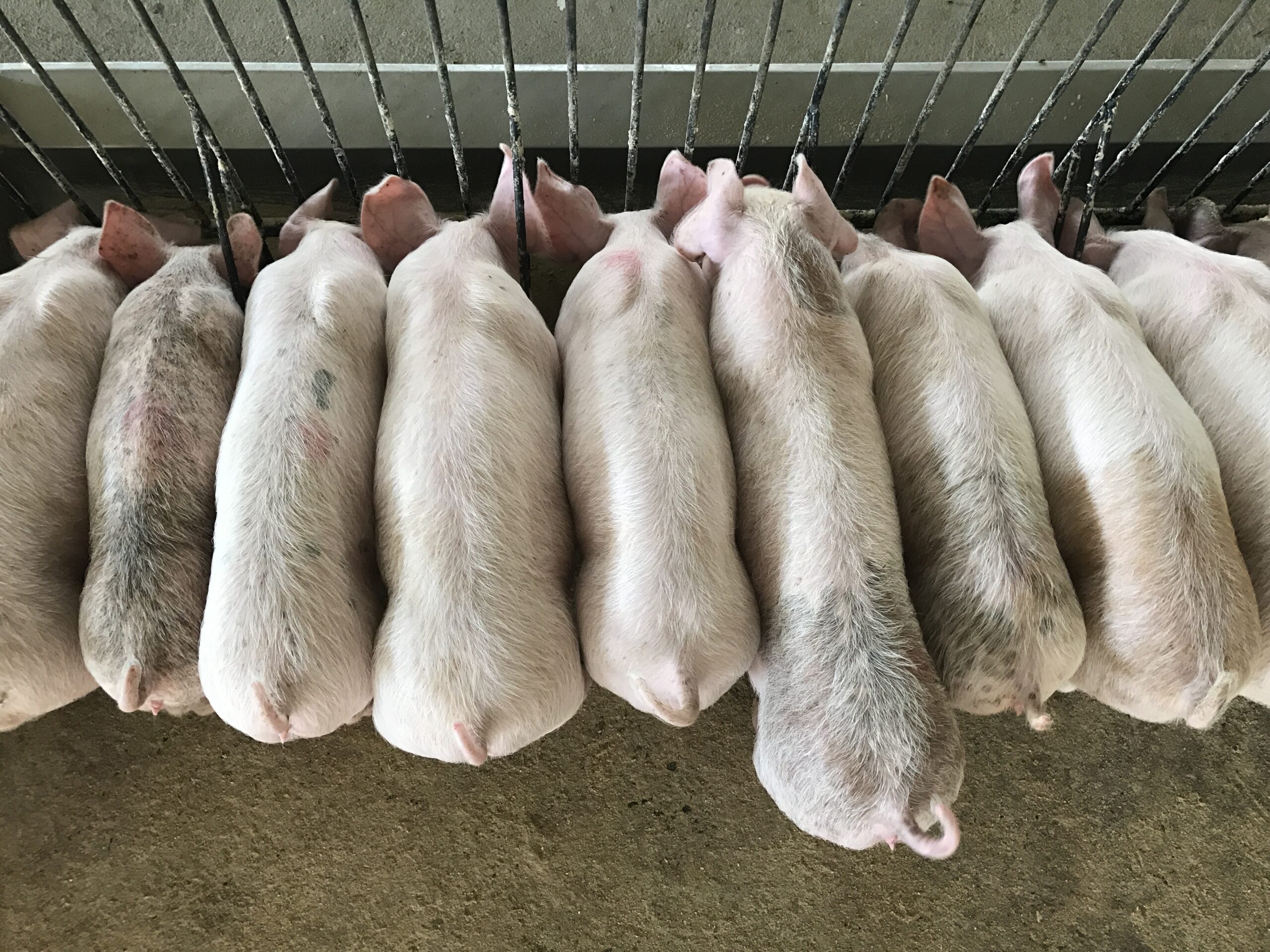Vitamins are involved in almost all metabolic processes, affect the production of new cells, enhance the body’s defense mechanisms. If avitaminosis in pigs is sharply manifested for one of them, the work of all other compounds is also disrupted. And in this case, it is necessary to quickly determine the deficiency of which particular vitamin group can be traced in the body.
Avitaminosis in a piglet
Hypovitaminosis and avitaminosis A
Such beriberi can be traced in pregnant pigs, the symptoms and treatment are described in detail, which allows you to quickly identify and solve the problem. Also, a lack of vitamin A can develop in young animals or in mature boars, which are actively used in breeding work.
Causes
The main cause of hypovitaminosis and avitaminosis A in animals is an unbalanced diet. Most often they can be traced in cases where there is not enough food high in carbohydrates in the diet. In piglets, the deficiency develops as a result of feeding with mother’s milk, in which there is also a lack of carotene in the body.
Factors associated with the development of beriberi in pigs include:
- diseases of the digestive system;
- diseases of the liver and kidneys of animals;
- lack of regular walking in the fresh air;
- lack of sunlight.
Main manifestations
Vitamin A plays an important role in maintaining the tone of the skin of animals. Therefore, its deficiency in the body is manifested by the following clinical signs:
- dermatitis development;
- baldness and changes in the structure of the bristles in breeds with pronounced hairline;
- the skin loses its elasticity and becomes dry.
Also, against the background of these moments, problems with the eyes appear. Conjunctivitis, lacrimation, keratitis, and inflammatory processes may develop.
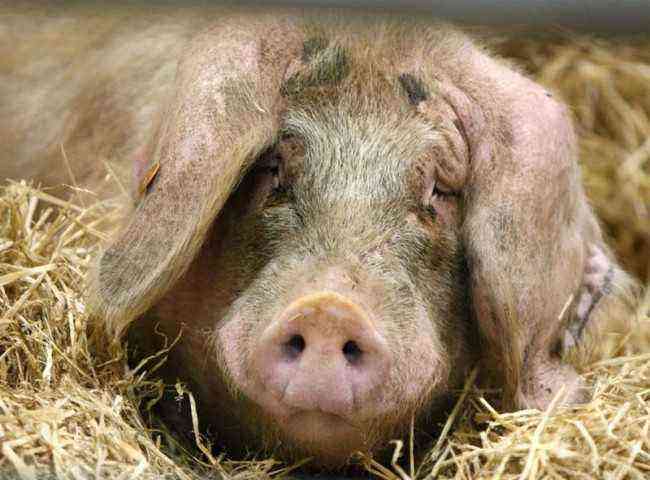
Conjunctivitis in pigs
This substance also plays a certain role in the functioning of the nervous system. Therefore, its strong deficiency is accompanied by the appearance of convulsions, paralysis, and coordination disorders. In young individuals, the rate of growth and development is sharply reduced. Pneumonia, indigestion often begin. The body is more susceptible to infections.
Treatment
With a positive diagnosis for hypovitaminosis A, first of all, the conditions for keeping and feeding animals are improved. For this, the following measures are applied:
- carry out regular cleaning of the premises;
- observe the mode of exercise of animals (walking is organized even in winter);
- improve the diet, be sure to supplement it with fresh carrots and high-quality chopped hay.
Of the medications, fish oil is often used. It is mixed into animal food at a dosage of 50 ml per head. The course of treatment is 10 days. In especially severe cases, vitamin A injections are prescribed. The dosage of the drug is as follows:
- adult pigs – up to 200 thousand units;
- young animals – 40 thousand ED;
- sows during pregnancy up to 100 thousand units.
Prevention
Prevention of the appearance of beriberi carotene in the body is carried out by prophylactic feeding of this substance to pigs. The average daily intake of such a supplement to the main food should be at least 30-40 mg per 100 kg of weight.
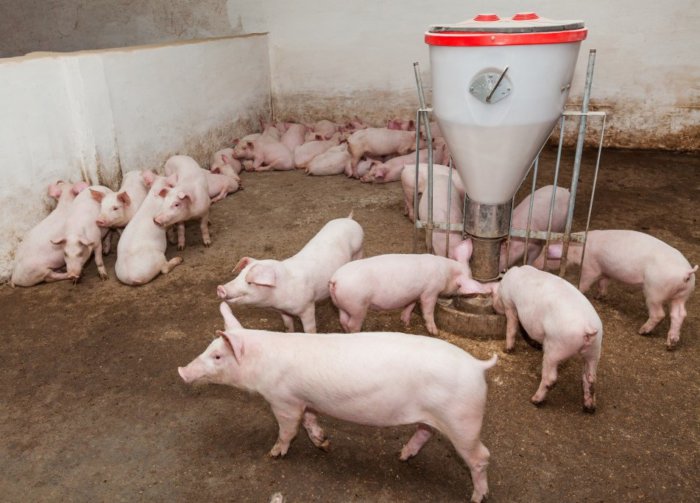
Pig feeding
Hypovitaminosis and avitaminosis B
Vitamin B deficiency occurs, as a rule, in adult pigs. The main reason for its development is the low content of such a substance in feed. The situation is further complicated by the conditions of keeping animals that do not meet the standards.
Symptoms
The main signs of hypovitaminosis B include:
- decrease in the intensity of growth and development of young animals;
- violation of metabolic processes in the body;
- anemia;
- deterioration in the quality of the skin.
In addition, this type of vitamin deficiency significantly affects the functionality of the nervous system, which manifests itself in coordination disorders, convulsions. Also, the animal can be traced paralysis of the limbs.
Treatment
Implementing the treatment of vitamin B deficiency in the blood, first of all, the diet of the animal is changed. It must contain the following components:
- fresh carrots;
- feed yeast;
- wheat bran;
- fresh greens.
Attention! In addition to proper nutrition, pigs are also prescribed theanine or cyanocobalamin. The first drug is used in the form of subcutaneous injections. The second is used by mixing with food.
Avitaminosis PP
This type of vitamin deficiency, also called pellagra, develops as a result of the same type of animal feeding. If pigs are constantly fed the same diet, which contains too little protein components, vitamin PP deficiency develops.
Main manifestations
The symptoms of this type of disease are pronounced. He is accompanied by:
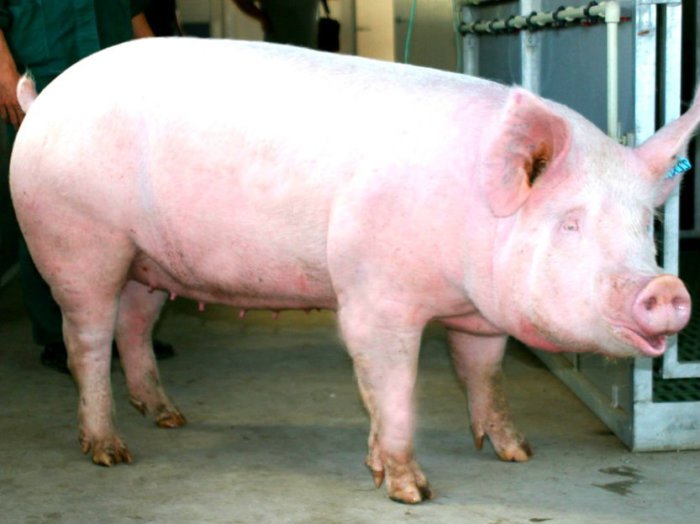
Symptoms of avitaminosis PP
- general depression and loss of appetite;
- inflammation of the mucous membranes of the oral cavity;
- cardiopalmus;
- diarrhea;
- frequent vomiting;
- convulsions;
- “black tongue”.
The skin also suffers from a lack of this vitamin. They develop ulcers through which another infection can enter the body.
This form of beriberi quickly depletes the pig and ultimately often leads to the death of the animal. Therefore, measures to eliminate the disease should be taken as soon as possible.
Elimination
The most effective way to restore the norm of vitamin PP in the body is the use of nicotinic acid. She is fed to living creatures in the form of tablets. In this case, the dosage is 0,1 g per head. It is also possible to carry out injections with a 1% solution, which is administered in a volume of 1-3 ml three times a day for 14 days.
Contributes to the recovery and increase the norms of greens, fodder yeast, silage in the diet.
Hypovitaminosis and avitaminosis C
Against the background of hypovitaminosis C, scurvy develops rapidly in animals. Most often, the lack of ascorbic acid occurs in the absence of its sufficient amount in the feed. Digestive problems and various infectious diseases also negatively affect the absorption of such a substance in the body.
Main symptoms
With the development of scurvy in living creatures, the following clinical manifestations develop:
- growth retardation and weakening of the skeleton in piglets;
- bleeding gums;
- anemia;
- slowdown in growth.
Also, with hypovitaminosis C, the level of collagen production in the body is significantly reduced. This, in turn, leads to a violation of the integrity of the walls of blood vessels. Against the background of this phenomenon, small hemorrhages appear on the skin, as well as in the internal organs.
Treatment
All therapeutic measures, as in the case of other problems of this kind, are to promptly restore the level of ascorbic acid in the body. To do this, it is introduced into the body by intramuscular injection in the amount of 0,5 g per individual.

Restoring the level of ascorbic acid in the body
An additional source of vitamin C for pigs are infusions of pine needles and wild rose. They are prepared according to this recipe:
- Prepared needles (or wild rose) are carefully crushed.
- The resulting mass is poured with hot water at the rate of 10 liters of liquid per 1 kg of raw materials.
- The liquid mass is poured into a suitable container and stand for 5 hours.
- The infusion is added to food for pigs at a dosage of 7 ml of liquid per 1 kg of weight.
Important! Separate symptoms of scurvy or complications developing against its background are treated individually with appropriate medications and folk remedies.
Hypovitaminosis and avitaminosis E
Lack of tocopherol affects the sexual function of animals. In addition, beriberi E leads to disruption of many metabolic processes and reduces the protection of cell membranes from oxidative processes, which leads to their accelerated wear.
Main features
The manifestations of tocopherol deficiency in the body include:
- decreased sexual desire in boars;
- decreased seed production;
- the development of infertility in sows, which begins as a result of the destruction of germ cells;
- death of the fetus in the womb of the pregnant uterus.
Numerous studies also indicate that hypovitaminosis E is one of the main causes of the development of white muscle disease in pigs.
Treatment
Replenishment of tocopherol reserves in the body is carried out by increasing its amount in the feed used. For this, the main food is supplemented with fish and bone meal, fish oil. Also, a sufficient amount of such a substance is found in green grass from pastures. But in this case, it is useful only fresh, since the amount of tocopherol in dried herbs and hay gradually decreases.
In addition to changing the composition of the feed, various preparations containing the vitamin are also prescribed.
Hypovitaminosis and avitaminosis D
The main reasons for the development of this hypovitaminosis are improper feeding and violation of the rules for keeping animals. The concomitant occurrence of rickets (a consequence of a lack of vitamin D) factors include:
- constant dampness in the pigsty;
- crowded content of living creatures;
- lack of regular walking in the fresh air;
- lack of sunlight.
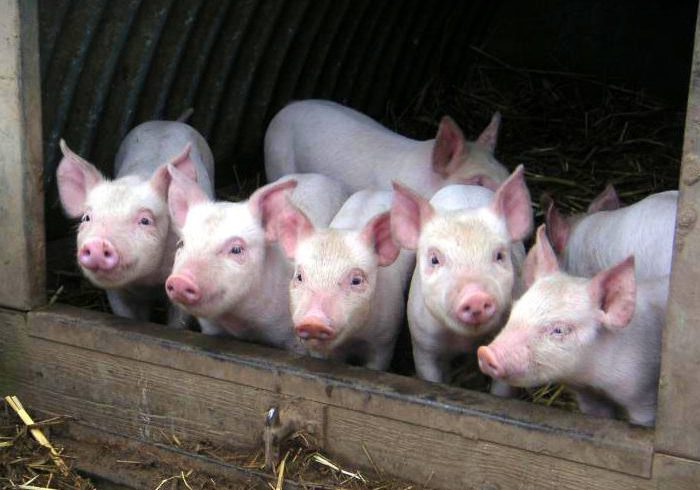
Poor living conditions for pigs
Symptoms
A decrease in the level of calciferols in the body and the development of rickets are more often observed in young pigs. The main manifestations of this disease are:
- drop in daily gains in piglets;
- oppression of the baby and a decrease in his physical activity;
- lying in one place for most of the time.
Gradually, the defeat of the skeleton of the young is manifested. It consists in the curvature of the ridge and limbs. The ribs and bones of the skull can expand significantly. As a result, this is reflected in the motor function of the animal. At first, his movements become unusual, awkward. In the future, the baby moves only crawling and cannot rise to his feet.
Medical measures
Rickets should be treated as early as possible. To do this, immediately after its detection, piglets are provided with special conditions of detention:
- feed containing an increased amount of calciferol, calcium and phosphorus is introduced into the diet;
- if the young are still fed on the mother’s colostrum, then vitamin and mineral supplements must be fed to the lactating sow;
- sick animals are transferred to a separate room in which they have more space for physical activity;
- young animals with a deficiency of substances of the vitamin D group are more likely to walk outdoors under the sun’s rays.
In addition to the correct diet, pigs are also given injections of vitamin D. Such a preparation involves a solution, the concentration of the active substance in which is 500 thousand units per 1 ml of solution. The dosage is calculated in such a way that the injection volume is 30 times higher than the natural norm of the substance in the body.
Prevention
Prevention of the development of rickets in piglets is implemented through the following measures:
- maintenance of living creatures in spacious, dry and bright rooms;
- compliance with a clear plan for walking young animals in the fresh air (in winter, the number of walks is increased, but their duration is significantly reduced);
- improving the feed and introducing foods rich in calciferols into the diet.
An imbalance of vitamins in the body of pigs can lead to serious health problems and even death of pets. That is why it is important to follow the basic rules of feeding and keeping such living creatures.
